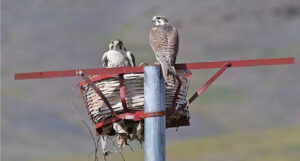Third International Scientific and Practical Conference “Eagles of the Palearctic: Study and Conservation”
Raptors Conservation. Suppl. 2. Proceedings of Conferences
What happens to Saker Falcon in Chinese Altai?
MaMing R. (Xinjiang Institute of Ecology and Geography, Chinese Academy of Sciences, Urumqi, Xinjiang, China)
Contact:
MaMing maming@ms.xjb.ac.cn
Recommended citation: MaMing R. What happens to Saker Falcon in Chinese Altai? – Raptors Conservation. 2023. S2: 463–464. DOI: 10.19074/1814-8654-2023-2-463-464 URL: http://rrrcn.ru/en/archives/35231
In China, the protection level of Saker Falcon (Falco cherrug) has been upgraded from National Level II to National Level I in 2021. Why is this happening? We know there are some reasons for this. Firstly, there has been excessive capture over the past thirty years, including legal or illegal activities focusing on domestic and foreign markets, of course, most of which have been negotiated between governments. The most symbolic event was Qatar's support of 100 million Yuan to establish a Saker Falcon Breeding Center of Altay in 2014. Soon, the relevant departments issued orders and target tasks to capture young falcons in various counties in the Altay region. In addition to capturing a large number of migrating falcons for supply to Qatar and Saudi Arabia, other threats have also quickly emerged in northern Xinjiang. For example, largescale mining, including direct destruction of breeding habitats by open-pit coal mines and quarries, as well as the construction of hundreds of power stations locally for the so-called "from West to East Power Transmission" project. The results are almost complete loss of habitats, frequent electrocutions, collisions, and poisoning. Although relevant departments have also built artificial nests for falcons in other places, the results have been minimal and insufficient to compensate for rapid population loss.

